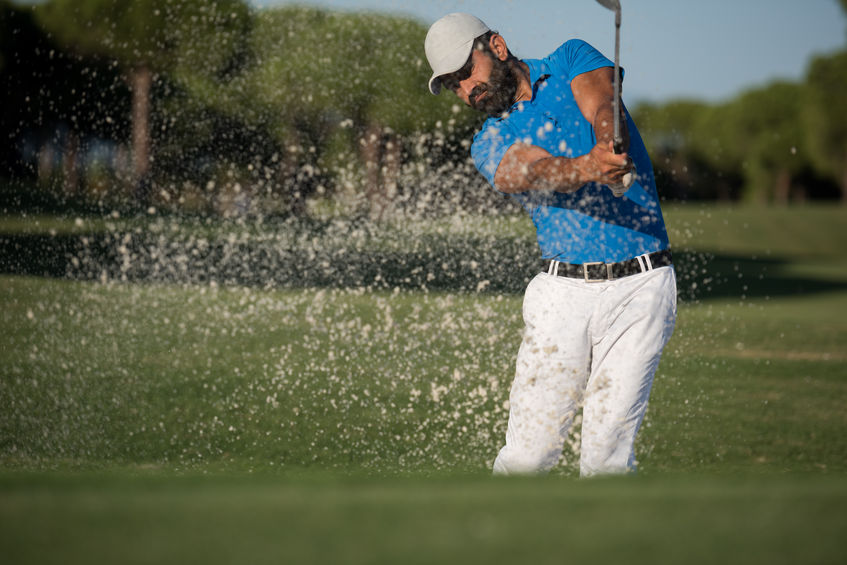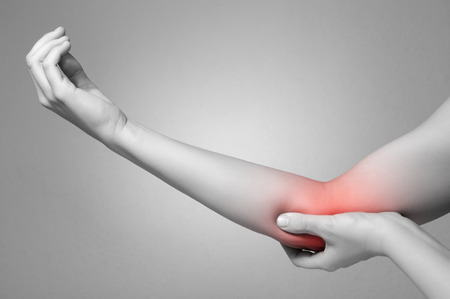 Golfer’s elbow (Medial Epicondylitis), like it’s cousin, tennis elbow, is an overuse problem of the elbow. Like tennis elbow, golfer’s elbow leads to pain and sometimes stiffness. Unlike tennis elbow, golfer’s elbow sometimes can also cause nerve symptoms. Let’s take a look…
Golfer’s elbow (Medial Epicondylitis), like it’s cousin, tennis elbow, is an overuse problem of the elbow. Like tennis elbow, golfer’s elbow leads to pain and sometimes stiffness. Unlike tennis elbow, golfer’s elbow sometimes can also cause nerve symptoms. Let’s take a look…
Definition
Golfer’s elbow describes a degenerative process. It affects the origin of those tendons on the side of your elbow closest to your body. These tendons are those responsible for flexing your wrist and fingers and turning your wrist so that your hand is facing the floor.
Causes
Golfer’s elbow is an overuse disorder. Overuse problems occur when a tissue, in this case, a tendon, does more work than it is capable of doing. As a result, degeneration, sometimes associated with partial tearing of the tissue and frequently associated with inflammation, develops. Two common scenarios lead to overuse injuries. First, healthy, young, mostly normal tissue performs an increased level of activity (either an increase in intensity or frequency or a reduction in rest). Second, compromised (injured or old) tissue performs a routine or increased level of activity. Either way, the level of activity supersedes the tissue’s capacity.
Symptoms
The primary symptoms of golfer’s elbow are pain near the bony prominence on the inner aspect of your elbow. This discomfort is frequently associated with gripping, pulling or lifting, particularly with your palm facing up. In more significant cases, there can be a constant pain even with very little or no activity. It is not uncommon for the pain to radiate into the muscles of the palm side of your upper forearm as well. Sometimes elbow stiffness, local swelling and hand weakness may also be present.
The ulnar nerve rests just behind the bony bump on the inner aspect of your elbow. Sometimes this nerve can get irritated by the adjacent swelling and inflammation. If this occurs, numbness of the tips of your ring and pinky fingers can develop. With more severe nerve involvement, there can be an even greater weakness of your grip. Occasionally in these cases, atrophy of specific muscles of your hand can develop as well.
Diagnosis
For the most part, golfer’s elbow is a clinical diagnosis. Typical symptoms, a physical exam and a relatively normal x-ray are all that is usually needed to make the diagnosis. Ordinarily, imaging studies other than an x-ray are not required.
The exam of your arm is often diagnostic. Typically, there will be local pain and tenderness in the soft spot just off the front of the bony bump at your inner elbow. Often, symptoms are worsened by testing for resisted gripping and finger and wrist flexion. Additionally, resistance applied to your wrist while attempting to turn your palm over so that it is facing the ground also may increase your symptoms. As mentioned, there can be some local swelling and, in more significant cases, elbow stiffness, painful elbow motion, and occasionally associated nerve symptoms. An EMG and a nerve conduction study may be helpful In the instances where nerve involvement is suspected.
If more advanced imaging studies like an MRI is obtained, tendinosis (tendon degeneration) and partial tendon tearing, as well as local inflammation and swelling, are often noted. These findings, however, do not typically impact treatment.
Golfer’s elbow is a common elbow malady. It frequently leads to elbow pain, stiffness, swelling and occasionally nerve symptoms in your hand. It often can be easily diagnosed with a standard doctor’s visit. Treatment to reduce the symptoms or to resolve the problem are occasionally needed. A future post will review these treatment options.
